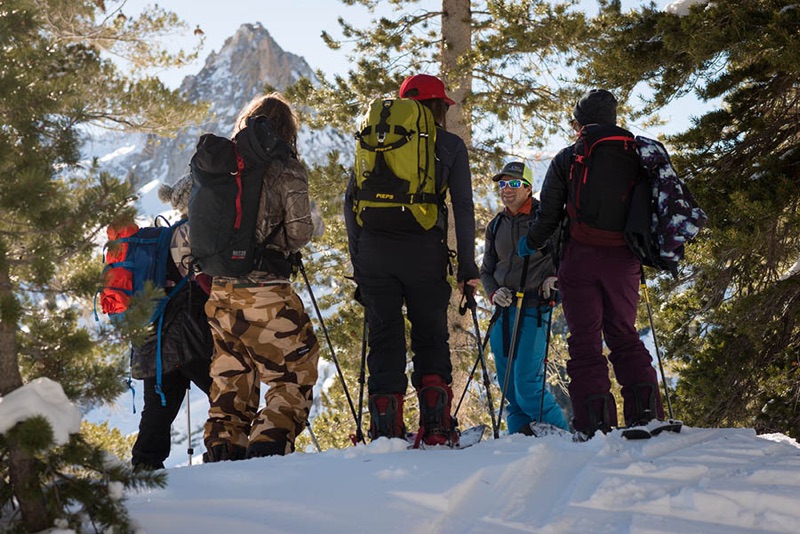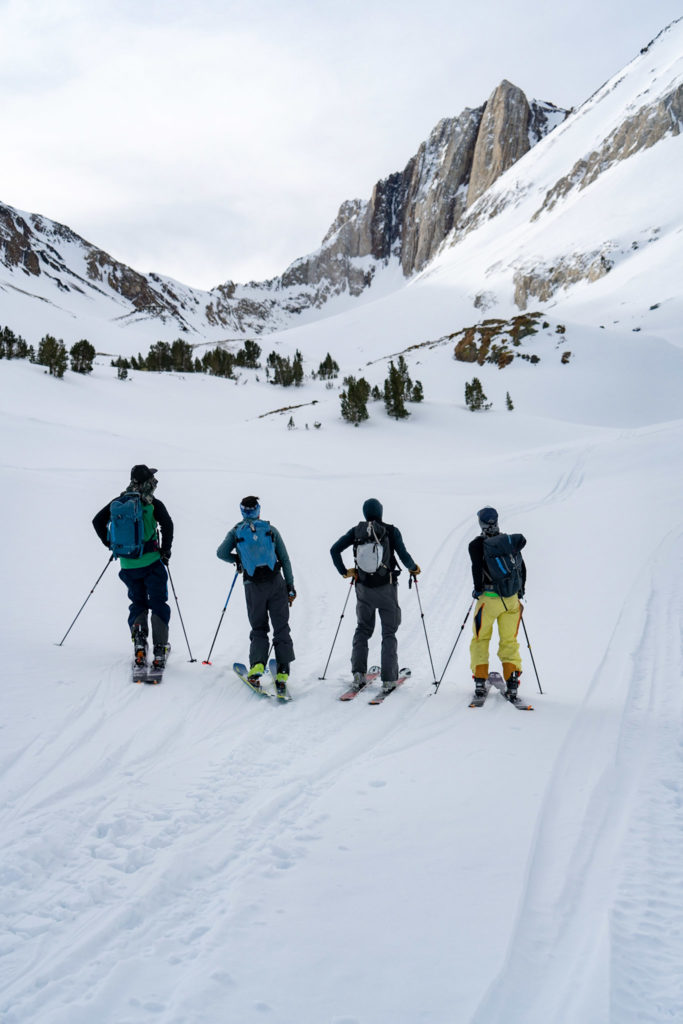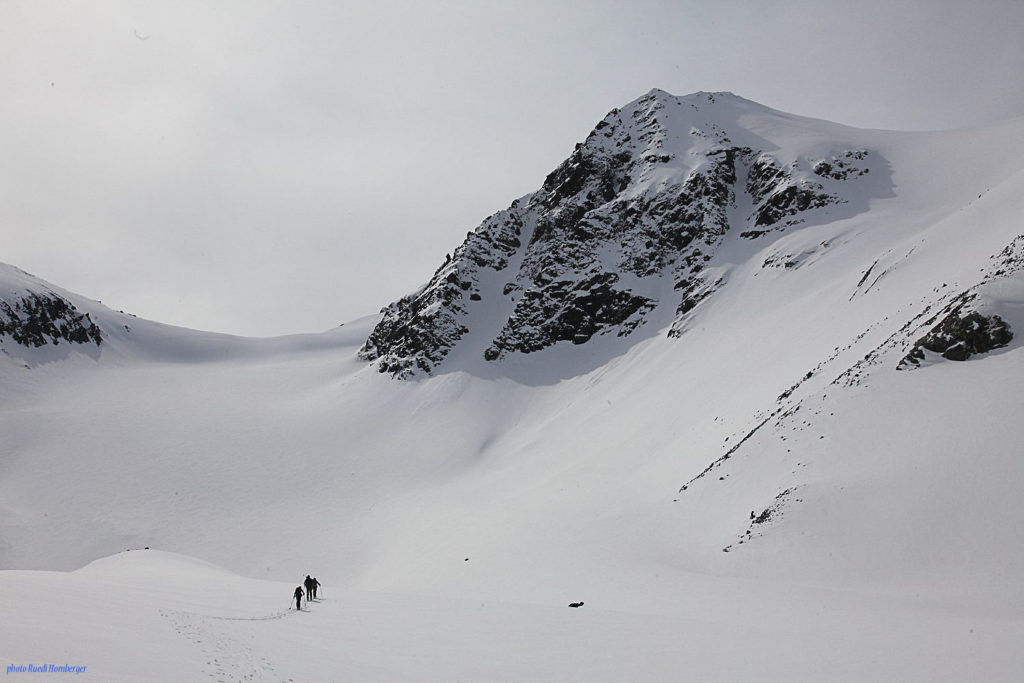Team Decision Making: How to Speak Up and Listen
Early this season, I was faced with a social dilemma. I made a plan a few days prior to ski in the backcountry with a good friend and ski partner, Jerôme (not his real name). It was mid-December, and the mountains had finally received a decent snowfall of 50 centimeters to allow us to tour. It settled into a slab over a shallow base of weak facets, and the avalanche danger spiked. The Eastern Sierra Avalanche Center—despite not yet issuing advisories—was reporting natural and human-triggered avalanches, and accounts of shooting cracks, snowpack collapses, and even remote triggering from eager backcountry enthusiasts. I was feeling the froth of excitement too, but also leery about the familiar scenario where the best terrain options for having fun would be the same terrain where dangerous avalanches could most likely be triggered. It was apparent we would need to exercise some degree of self-control to manage our risk on our day out together.
The day prior, Jerôme and I connected by phone to start our planning process. I communicated that it was my first backcountry day of the season, that I had a high degree of uncertainty about conditions, and that I had been distracted lately by the chaos of life. We agreed together to adopt a “Check It Out” terrain mindset, whereby we would design a terrain-use plan to allow us to avoid avalanche terrain, gather information, and stretch the legs, all while maintaining high confidence and a low risk level. We achieved amicable consensus on a starting point and a few agreeable route options.
Then, just before the end of the call he said, “Do you mind if another friend of mine joins us?”
Normally, this wouldn’t have been an issue for me. I think of myself as pretty easygoing and adaptable. When teaching avalanche courses, I advise students to be discerning about their backcountry partners. As a mountain guide though, I go out often with people I have never met before and know very little about, and I have learned to manage the uncertainties about that. This time, for some reason, I wasn’t feeling it. Would this person share our mindset and approach to the day? What was their background, training, and experience? What were their goals, and would they be in line with ours? It was an uncomfortably quiet moment on the phone because I sensed that Jerôme had already invited this person to join us, reasonably presuming I’d be ok with it. The dilemma was: Should I repress my apprehension and go forward with the plan anyway, or try to engage in an awkward renegotiation of the plan?

Every backcountry day, we manage risks and uncertainties. The most effective way to do this is by building and using a reliable team. Teams can be the biggest asset to any trip’s success, survival, and enjoyment. A team is more than a group, herd, pack, pod, flock, drove, troop, pride, swarm, tribe, bevy, convocation, or gathering. A team is an assemblage of individuals who depend on each other as they work together toward a common goal, and who achieve better results from their collective efforts than each would separately—a feature known as team synergy.
Consider that 90% of fatal avalanche accidents are triggered by the victim or someone in the victim’s group. We say that “terrain is the solution,” but only if we choose to use it as such. Accident statistics—and, closer to home, those accidents that have involved our friends and colleagues—remind us that this is a tall order. Would this reality be so stark if teams had been better utilized, if the environment to communicate were more effective and open? It has been widely accepted that small, coordinated teams have the capacity to make better decisions than even experienced individuals.
There are plenty of resources out there to help us unravel the mysteries of the snowpack, analyze the avalanche hazard, and identify pitfalls in our decision-making, but fewer that offer specific direction on how we can best use teamwork in our backcountry pursuits. Our complex task is to try to maximize both safety and enjoyment, with the understanding that the two often may appear to be in diametric opposition. The reality, though, is that increasing our level of safety generally increases the enjoyment that we seek. When our situation makes us feel uneasy or uncomfortable, it generally detracts from the experience. Unwelcome consequences from our actions can result in an abrupt sacrifice of current and future enjoyment. Avalanche professionals and experts such as guides, ski patrollers, and forecasting teams all understand the value and power of teams in achieving risk-management goals. We should all structure our team efforts using similar principles.
Here is a simplified operations manual for creating and using a backcountry T.E.A.M.:

Together we plan and travel
- Be on the same page, using common language
- Commit to honor team agreements
- Travel together and decide together
- Decide by consensus; respect anyone’s veto
To do something together means to do it “in companionship or close association.” Everyone should be on the same page, or “singing from the same sheet of music,” as they say. A great way to achieve this is to go through a structured trip plan together, for example:
- Get the backcountry forecast; discuss today’s risk factors
- Adopt a terrain mindset
- Select your route and agree on slopes to avoid
- Review your emergency plan
Team members should not only be able to communicate effectively with each other, but they should also be willing to commit to do so. We should have explicit agreements and expectations in place, and we should hold our teammates accountable for honoring them. Teams require trust. In the field, teams agree to “ride together and decide together,” by consensus. That means maintaining a line of communication between all team members throughout the day. Each individual the power and ability to veto a proposed plan at any time. If one person on the team doesn’t want to follow a course of action, the rest of team agrees, and they discuss alternate options that everyone can agree to together.
Everyone has a voice
- Be present and contribute to discussion
- Show up prepared and ready
- Nobody gets a free ride
- Become a leader
Individuals make up the team, and each of us should participate and be accountable. Our responsibility is: 1) to enable the team’s decisions from trip plan to trip end, and 2) to be ready to help when others are in need.
We should empower ourselves and our teammates to contribute to good team decisions. We hold ourselves to a high standard of reliability and trustworthiness by doing our homework, showing up prepared and ready to meet the physical and mental challenges for the day. We each take on the responsibility of regularly maintaining our gear and our skills to respond effectively in a potential avalanche rescue or other emergency. Everyone is expected to express their opinion when it comes to discussions of avalanche risk. A good team understands that avalanches don’t care who has more training or experience. Everyone’s perspective is valuable.
That’s right, nobody gets a free ride. In a consensus decision-making process, no one individual can say after the fact, “Well, that went poorly. I didn’t want to do it, but nobody else agreed with me, so I didn’t speak up.” Each team member is equally responsible for the outcome of the day. Each team member is in required to show his or her leadership in this sense.
Being an individual asset to a team means taking on the qualities of Transformational Leadership, described by Bernard Bass (1985):
- The ability to engage others by our actions—leadership by example
- The ability to inspire others with our vision, through clear communication
- The ability to demonstrate genuine concern for the needs and feelings of each team member, and to draw out their full potential
- The ability to stimulate others to be creative and challenge team preconceptions
Assess uncertainties and challenge Assumptions
- See each member as an intellectual asset
- Challenge assumptions—with evidence
- Identify and manage uncertainties
- Create an environment that welcomes productive debate and discussion
Our judgment is affected by the experiences we have had, informed not only by the depth of our experience but also its diversity. The old proverb says: “Judgment comes from experience, but experience comes from poor judgment.” Of course, no two people have had the exact same experiences, a team brings varying perspectives together. Our team synergy relies on the result of our collaboration, which creates judgment that is more than the sum of each of our experiences individually.
Recognizing this, we can see each member as an intellectual asset, a support for checking ourselves against the desires, preferences, habits, and biases that conspire against good backcountry decisions. Challenging assumptions means tethering our rationale to objective reality, based in evidence. When we actively compare and contrast what we think we know and don’t know with each other and with the facts that support that understanding, we may come to see things differently. These engaging discussions help uncertainties float to the surface like an avalanche airbag. Identifying uncertainties is extremely valuable, and learning to manage them as a team is critical because they will always be there.
If we don’t challenge the assumptions that inform our decisions, who else will? That’s right, nobody. An effective team creates a social environment where debating one another is considered de rigueur. Not doing so puts the team at increased risk. We are all capable of mental gymnastics to justify satiating desire and acting on emotion. We need friends and teammates willing to question potentially irrational conclusions and talk it out.
Meet to debrief the day’s decisions
- Reflect on the team’s performance and communication
- Maximize learning opportunities
- Improve over time
Decision-making moments are where well-built teams shine. Teams help to limit the effects of adverse human factors on our choices and make sure our actions remain in line with our team mindset and terrain-use plan.
Avalanche terrain is a “wicked learning environment,” meaning it is difficult to gain valuable feedback on our decisions for learning unless an avalanche occurs. Short of an avalanche release, our peers and mentors are our best source of feedback. This is why debriefing the day’s team decisions is critical for continued learning. Mindful reflection helps us develop our judgment over time and become better team members. So make time and meet for a day end debrief. Yes, it can be fun—a wrap-up over a beer or in the hot tub. Meet as a group as soon as you are back, while the experience is fresh and relevant.

As I paused and contemplated my dilemma on the pre-trip phone call with my friend Jerôme, I emerged to speak openly and honestly. I told him I would decline to go with the unfamiliar team member this time.
This actually took a fair amount of will, assertion, and clarity to do. My heart rate increased, as I knew that I had just put Jerôme in an awkward position between two friends he had made conflicting plans with. I feared it would make him feel disappointed or embittered, less willing to call me again. Backcountry ski partners who share a mindset and approach to backcountry teamwork are precious. Good friends are valuable assets in life, and in the midst of the current state of the world, are more appreciated than ever. I shuddered to think I might put a long-standing relationship at risk by communicating my concerns about our plan.
After a quiet moment, to my relief, Jerôme expressed full understanding of my position. He acknowledged some initial disappointment that he got over very quickly. We mutually and happily agreed to resolve the matter by re-working the plan to go out together on another day. We ended up having an outstanding tour together and a great debrief of the whole situation on the skin track in the morning, the result of which no doubt was to make our team even stronger.
These are the persistent weak layers within our psyche that can be difficult to assess and navigate. Cultivating backcountry teams with a shared vision and approach gives us confidence that our teammates will respect each other’s opinions, perspectives, and feelings as we plan and execute backcountry experiences together. We understand that this is how we rely on each other to enjoy the backcountry, and how we live on to cherish the memories we create together in the mountains. Teams work best when we give each other the courage to speak up and listen.
Howie Schwartz is an IFMGA mountain guide and educator, and co-owner of Sierra Mountain Guides. He has worked with over 6,000 recreational and professional students on avalanche and ski-guiding courses since 1995. He lives and adventures from his home in Bishop, Calif.


